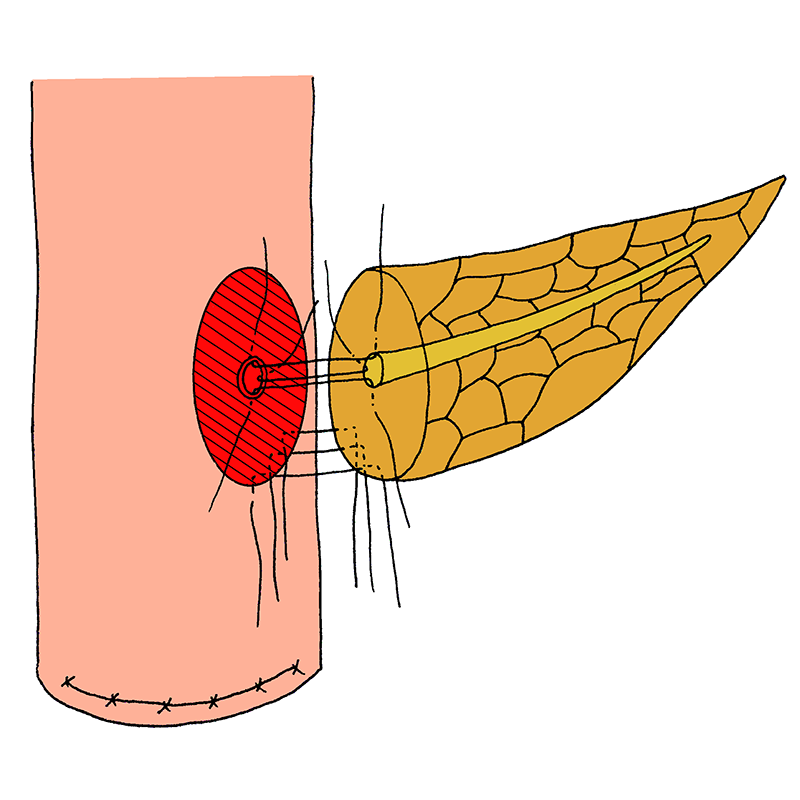Introduction
Pancreatoduodenectomy offers the best chances for long-term survival to patients with pancreatic and periampullary malignancy. However, this is a technically challenging procedure, with a pancreatoenteric anastomosis as the standard procedure for managing the pancreatic remnant.
Failure of the pancreatic anastomosis, resulting in potentially life-threatening pancreatic fistula, is a dreaded complication after pancreatoduodenectomy. To reduce the incidence of pancreatic fistula, many different types of pancreatic anastomoses have been proposed.
About this website
This website provides a complete overview of all pancreatic anastomosis techniques ever published. Based on three fundamental groups, i.e. end-to-end pancreatojejunostomy, end-to-side pancreatojejunostomy and end-to-side pancreatogastrostomy, a total of 66 techniques are summarized and visualized.
This website can be used as an interactive platform for pancreatic surgeons to share their personal anastomosis technique, for uniformity in reporting anastomosis techniques in future research and as a learning tool to give insight into the various possibilities of restoring pancreatoenteric continuity.
Researchers
- Lois A. Daamen,
- F. Jasmijn Smits,
- Marc G. Besselink,
- Olivier R. Busch,
- Inne H. Borel Rinkes,
- Hjalmar C. van Santvoort,
- I. Quintus Molenaar
For the Dutch Pancreatic Cancer Group






